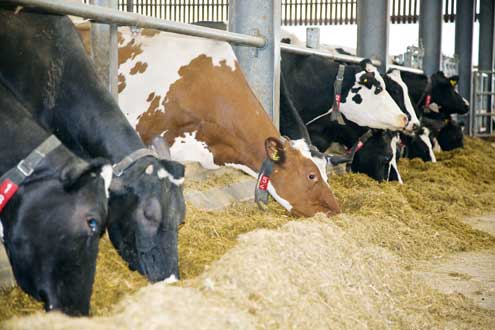Maintain soya bean meal cover to avoid supply issues

Hot, dry weather in the USA in the run-up to the soya bean harvest led to the US Department of Agriculture (USDA) reducing the estimated crop yield from 42.6 to 41.2 bushels/acre in its latest report. There had been patchy rain in some regions, but not enough to allay fears that pod filling would be affected.
Although the crop is still a large one, even at the lower USDA yield estimate, low US year-end stocks are causing concern and an even bigger crop would have been very welcome. Actual yields won’t become clear until well into the harvest, so expect markets to remain volatile at least until late October or early November.
The market’s eventual reaction to the balance between low year-end stocks, harvest volume and export demand remains unknown, though there is the potential for prices to ease if all goes well. However, reports suggest China has already lined up to take the first boatloads of US soya bean that become available, which would likely delay any effect on UK soya bean meal prices.
Best advice is therefore to maintain perhaps two to three month’s cover on soya bean meal going forward to avoid potential short-term supply issues. As the US soya bean harvest progresses, look to gradually book the rest of the winter’s requirements during any dips that do appear if current volatility remains, but allow some room to take advantage if the market falls.
It’s also worth considering at least some cover for next summer, as current contracts on offer at about £320/t for May-October delivery represent a big discount on spot prices. There are predictions of a big soya bean crop being planted in South America, with current estimates putting the 2013-14 Brazilian harvest at 88m tonnes compared to just 82m tonnes this year. This good news is currently being factored into those lower-priced forward contracts.
As always, anything can happen between now and then, including further reductions if the good news continues. Either way, booking at perhaps 10-20% of requirements at what appears to be a good price would be a sensible start to a risk-management strategy for next summer’s feed buying.
The latest figures from Informa have put the oilseed rape crop from the combined EU-28 at 20.5m tonnes, up 7% from last year. There are also big yields being reported for the Canadian canola crop, with a rumoured 18% increase in harvest volume to 15.7m tonnes. In addition, expectations are for rapeseed oil demand in the EU to rise, with knock-on effects for the volume likely to be crushed, although this may be countered by a reduction in biodiesel production.
This increase in expected rapemeal volume is helping to keep prices low in order to compete with soya bean meal, and good value as a result. Prices are likely to follow soya bean meal in the end, however, so look to follow a similar buying pattern of two to three month’s cover, plus look to book remaining contracts if prices drop following the US soya bean harvest.
There’s also currently an opportunity to use alternative protein feeds to cut feed costs and reduce some of the risk associated with volatile markets. The low rapemeal price is making the rumen-bypass protein supplements a great buy for the winter and much better value than hi-pro soya bean meal for digestible undegraded protein (DUP). High-protein liquid feeds can be used to replace rapemeal, yet also improve ration palatability and sugar content to help drive intakes and rumen fermentation.
For cereals, a better-than-expected crop is keeping UK wheat prices both reasonable and steady, and well worth considering if additional cover is still needed for the winter. In contrast, high export demand is supporting barley prices despite a predicted 2m tonnes surplus this year, while predictions of a smaller US corn crop next year – current prices are very close to break-even – could put upward pressure on the price of all cereals at some point during early 2014.
There’s good news for those needing digestible fibre. Soya hulls are still good value, in the mid £150s/t for the winter at the time of writing, though prices could rise if supplies tighten.
Finally, the price of wheatfeed for the winter is slowly rising as the quality of new-crop milling wheat continues to look good, reducing the amount that needs to be processed to meet the demand for flour. If wheatfeed is featuring strongly in winter rations, look to secure requirements sooner rather than later to guard against short supply pushing prices even higher.
